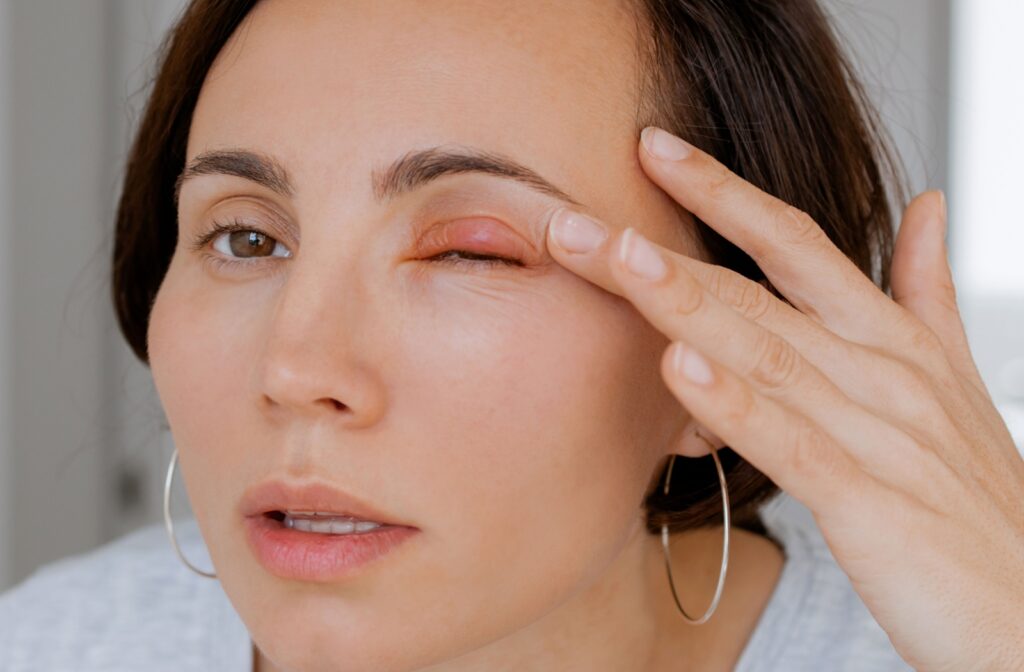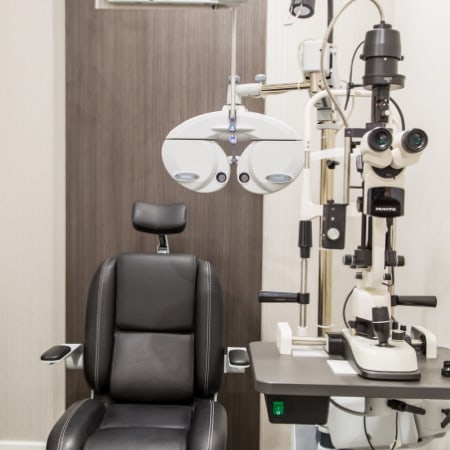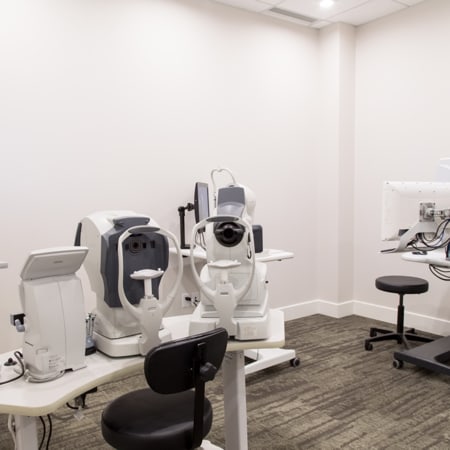Think you might have pink eye? You could be right—but it’s also possible that you have something else. Several eye conditions share similar symptoms with pink eye, making it one of the most commonly misdiagnosed eye issues.
Conditions commonly mistaken for pink eye include allergies, styes, dry eye syndrome, blepharitis, and even uveitis. While all of these can cause red or irritated eyes, they all require a different type of care. That’s why getting the right diagnosis is so important.
What Is Pink Eye?
Pink eye, or conjunctivitis, is an inflammation of the thin, clear tissue (conjunctiva) that lines your eyelid and covers the white part of your eye. It’s typically caused by viral or bacterial infections, allergens, or irritants like smoke or chlorine.
Symptoms of Pink Eye
Common signs of pink eye include:
- Redness in the white of the eye
- Watery or thick discharge (which may crust overnight)
- Itchy, burning, or gritty eyes
- Sensitivity to light
- Excessive tearing
While it’s often a mild condition, pink eye can be contagious and uncomfortable—especially if misdiagnosed.
Why It’s Important to Get the Right Diagnosis
Misdiagnosing pink eye can result in ineffective or unnecessary treatments, extended discomfort, and, in some cases, worsening of the real underlying issue. Many conditions that mimic pink eye require completely different treatment plans—which is why booking an eye exam is always your best bet if symptoms persist or worsen.

What Else Could It Be?
Here are some of the most common conditions that look like pink eye but aren’t.
Allergies
Airborne allergens like pollen, pet dander, or dust mites can trigger allergic conjunctivitis. This condition often causes red, watery, itchy eyes—but the cause is not an infection.
How to tell the difference:
Allergic conjunctivitis usually affects both eyes and is often paired with other symptoms like sneezing, a runny nose, or itchy throat. OTC antihistamines or allergy eye drops are usually effective treatments.
Styes
A stye (or hordeolum) is a red, tender lump that forms along the edge of the eyelid. It may look like a pimple and cause discomfort or localised swelling.
How to tell the difference:
Unlike pink eye, styes are restricted to the eyelid and don’t usually involve overall eye redness or discharge. Warm compresses are often enough to help them heal.
Dry Eye Syndrome
Dry eye occurs when your eyes don’t produce enough tears—or the tears evaporate too quickly. It can cause redness, burning, a gritty feeling, or blurred vision.
How to tell the difference:
Dry eye is more chronic and doesn’t typically produce discharge. It’s often worsened by screen time, dry environments, or certain medications. Artificial tears and lifestyle adjustments can provide relief, but if at-home treatments don’t work, in-office approaches are more comprehensive.
Blepharitis
Blepharitis is a chronic inflammation of the eyelids. It can cause redness, burning, crusty lashes, and swollen lids.
How to tell the difference:
While it may resemble pink eye at first glance, blepharitis tends to target the eyelid margins, not the conjunctiva. Good eyelid hygiene and medicated treatments can help manage it, especially when it’s recurring.
Uveitis
Uveitis is a more serious condition involving inflammation of the uvea—the middle layer of the eye. It can result from infections, injuries, or autoimmune conditions.
How to tell the difference:
Uveitis can cause redness, pain, blurred vision, and sensitivity to light. Unlike pink eye, it usually doesn’t involve discharge. Uveitis requires immediate medical attention to prevent permanent damage or vision loss.
When Red Eyes Point to Something More
Your eyes offer a unique window into your body’s overall health. Some systemic conditions may also mimic pink eye symptoms or show up during an eye exam:
- High blood pressure: Can cause changes in retinal blood vessels.
- Autoimmune disorders: Can cause inflammation or unusual retinal patterns.
- Neurological conditions: Optic nerve swelling may point to conditions like multiple sclerosis or even brain tumours.
Your optometrist can detect early signs of these issues during an exam—and may refer you to your family doctor or a specialist if needed.
What You Can Do
While you should avoid self-diagnosing, paying attention to your symptoms can help determine how urgent your situation is. Keep track of:
- How long symptoms last
- Whether one or both eyes are affected
- Additional symptoms like fever, nasal congestion, or sensitivity to light
If symptoms don’t improve with rest and over-the-counter remedies, it’s time to see an eye doctor.
Find Answers You Can Trust
When your eyes are irritated, red, or uncomfortable, it’s tempting to assume that you just have pink eye. But it could be something else entirely—and a proper diagnosis can make all the difference.At Bluewater Optometry in Sarnia, we take the time to understand your symptoms, perform a detailed eye exam, and guide you toward the right treatment—whether it’s pink eye or a condition with similar symptoms. Request an appointment today and get the clarity your eyes deserve.















